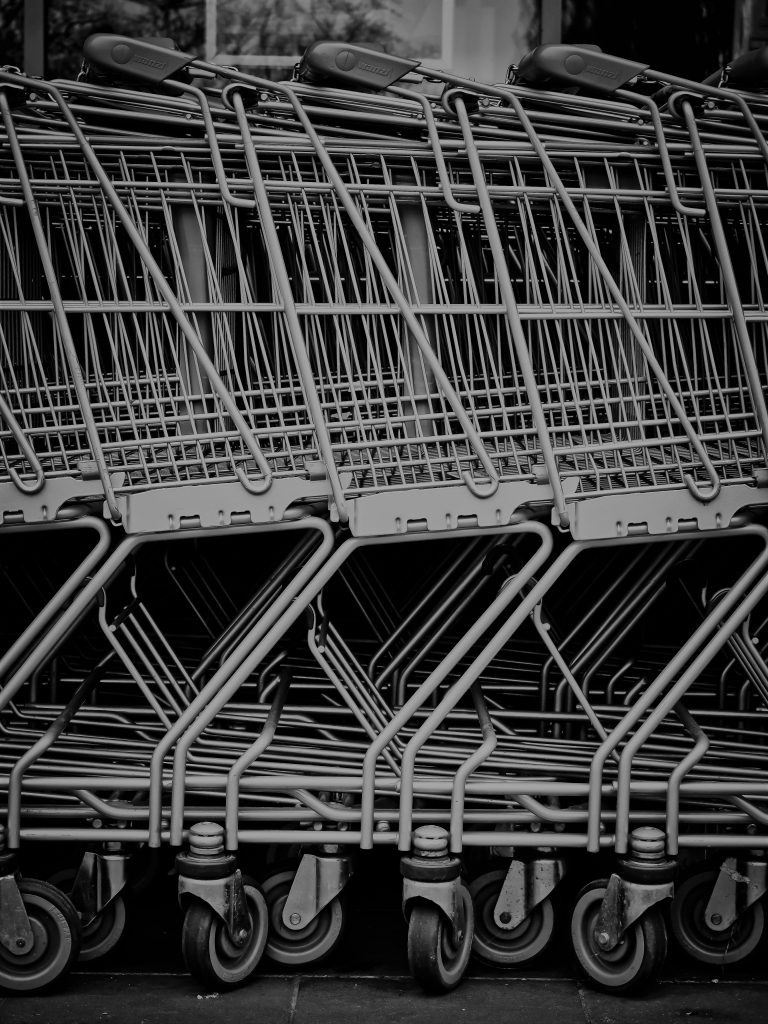Price inflation is starting to fall in many countries but it still remains way above the typical 2% target of most major economies. In the UK, inflation has been above target since August 2021 and in double digits since August 2022.
In 2021, I was one of the economists who warned that high inflation might not be “transient”, as major central and various think tanks were claiming at the time when they said rapid price rises wouldn’t last long. I argued for action before high inflation became embedded in the economy and made the UK a poorer country.
Unfortunately, this has now happened. And while I believe inflation will start falling from current highs soon, it’s going to be tough to bring it back to the government’s 2% target.
Central banks often point to the war in Ukraine and spiking energy prices when explaining recent rapid price rises. But US and UK inflation was already at a four-decade high before the start of the war. The truth is that the global economy is now entering a period of permanently higher inflation fuelled by four deeper forces.
1. ‘De-globalisation’
One of the long-term drivers of inflation is an economic cold war. The Trump administration in the US led initial efforts to impose trade sanctions against China and the current administration seems even more determined to end US reliance on Chinese products. The economic relationship between the west and Russia –- a major global exporter of energy and commodities – has entered a similar period of decline.
And this reversal of globalisation is not limited to international relationships. Politicians often promise to protect jobs, rejuvenate industries and reduce national trade deficits by weakening the local economy’s global ties. They do this with higher tariffs and bureaucratic costs, and by subsidising national industries.
This can fail to account for retaliation by the affected countries, however, which squeezes markets, making goods more expensive and boosting inflation. Politicians should be honest about the potential impact of these decisions on domestic prices.
With Brexit, for example, UK politicians promised all the benefits of a unified European market without any of the obligations. Unsurprisingly, the EU retaliated by reducing UK access to its market. The result was higher prices, reduced investment, workforce cuts, and ultimately a lower GDP path for all involved – but chiefly for the UK.
2. Climate change
The recent “salad crisis” saw shortages cause food prices spikes. This will not be a one-off. Weather is increasingly unstable, hindering production and even making natural disasters more likely.
Like pandemics, these events disrupt production and can be costly for businesses to manage and overcome. Increased costs are passed on to consumers, as are the costs of government initiatives such as carbon taxes.
3. Wage-price spiral
Central banks have been widely criticised for failing to act on inflation earlier and allowing a wage-price spiral to fuel further price inflation. This is when high inflation pushes up wages, which then boosts demand and spending, leading to more inflation. It’s a vicious circle that affects service-based economies (like the UK) the worst.
Recent worker strikes in the UK and the quick pace of US salary rises are not just a predictable reaction to high inflation, they also strengthen it. The wage-price spiral could push inflation higher for a long time unless addressed.

4. Highly liquid global markets
Liquidity is the amount of money that exists in an economy. Following the 2008 global financial crisis, central banks pumped more money into major economies through a convoluted process called quantitative easing (QE).
What started as a reasonable measure to shore up the banking sector and help households and businesses via low interest rates became an addictive habit in the 2010s. QE liquidity is now equal to 40% of GDP in the US and UK.
Economic theory suggests such extreme liquidity would cause inflation. While this didn’t happen, it has created problems for the global economy.
QE boosted the valuation of all assets. From real estate to shares, art and even Bitcoin, we are now in an “everything bubble”. This has not only increased inequality, but has also affected how central banks fight inflation. Sustained high interest rates could bankrupt households, businesses or even whole countries that borrowed when rates were low. Recent bank collapses are a stark warning that central banks are limited in how much they can use rate rises to fight inflation.
Solutions to persistently high inflation
The current situation makes it difficult for central banks and governments to fight inflation. If interest rates rise further to subdue inflation and then remain elevated for a long time, households, pension funds, banks, stock markets and possibly even governments could collapse as they struggle to afford rising rates on loans such as mortgages. This means that interest rate changes – one of the main tools used to fight inflation – has potentially lost its edge and credibility.
Unfortunately there are rarely any miracle solutions in economics, but working to address these deeper causes of inflation will help bring inflation back towards the government’s 2% target.
Environmental degradation and its impact on inflation relies on change by governments, businesses and consumers. A thoughtful migration policy could alleviate shortages of people and skills, boost production and keep inflation lower. The impact of trade wars on GDP could be addressed through investment in technology, people and infrastructure. Reversing acts of economic self-harm such as Brexit and other forms of economic nationalism could also play a role: our politicians also need to be honest about the impact of different choices on local businesses and people.
Overall, it’s important to prevent longer-term damage from this period of high inflation, rising interest rates and uncertainty. Vulnerable groups that tend to be more deeply affected by price rises should be protected. While this won’t bring inflation down in the short term, it will make the cost of living crisis easier for more people and businesses to navigate while these deeper causes are addressed.
Originally published by The Conversation and reprinted here with permission.








